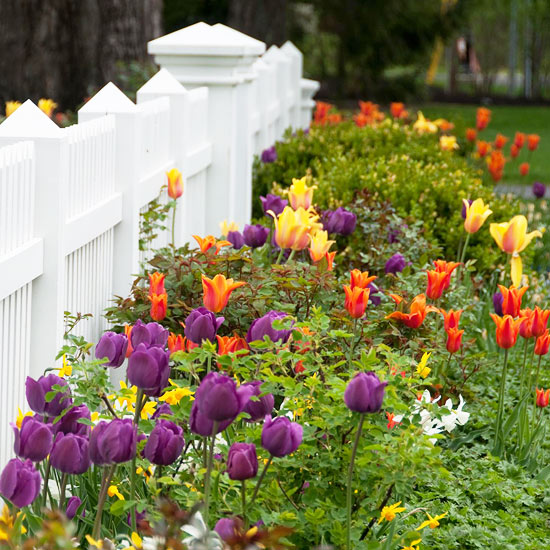






Animal repellents such as Liquid Fence generally work, as long as you apply them regularly to keep new growth protected. Another option is to use unpalatable bulbs. While tulips and crocus are like candy to deer and rabbits, alliums and daffodils are almost always left alone.
The tried-and-true solution is chicken wire. Enclose bulbs in a small wire cage, above. Or plant the bulbs, then tack the wire flat over the surface of the ground. A layer of mulch will conceal the chicken wire.
Sitting at room temperature -- as they often do when people forget to plant them -- most bulbs will lose viability by December, if not sooner. Bulbs slowly but steadily decline until they're planted, so it's best to plant as soon as you get them. September and October are ideal. Regardless of timing, make sure you discard any bulbs that are shriveled, rotten, or soft. Plant only firm, healthy bulbs.
In warmer climates, say Zone 8 or higher, potted bulbs can be left out all winter. In colder zones, place the pots in an unheated garage or shed. Or place them next to your home's foundation, then pile mulch deeply around and on top of them. Uncover or bring them outside in early spring.
One reason paperwhites are popular for forcing is they can be planted at any time without a period of chilling. But most bulbs can be forced if you refrigerate them for 10-12 weeks in a paper bag. (Be sure there is no ripening fruit nearby, which can harm bulbs.) Then plant them in pots or in a vase with gravel, below, where the roots can grow down into water.
Garden retailers generally sell tender bulbs such as gladiolus, below, freesia, tuberrose, dahlia, canna, caladium, and calla lilies in spring, when they can be planted without danger of an impending freeze. In fall, dig them up and store them in dry peat moss, and keep them cool -- never frozen -- until spring. Or simply discard them.
The surest bet is to buy prepackaged combos -- bulb growers devise these mixes for exactly that purpose. To make your own combinations, note the descriptions on bulb packages and in catalogs, which categorize bloom time as early, mid, or late. For simultaneous (or nearly so) flowering, combine bulbs in the same category. Also, jot down bulbs you notice blooming on the same date in your area, then use that list as a guide.
Yes. Wait until the foliage has died down in summer. Then dig up the bulb and immediately replant it in its new location. Some naturalizing bulbs, especially daffodils, benefit from transplanting when old, overcrowded clumps cease blooming. Dig up these clumps, separate the individual bulbs, and replant them several inches apart. They should start to bloom again in a couple of years.
Copyright © www.100flowers.win Botanic Garden All Rights Reserved